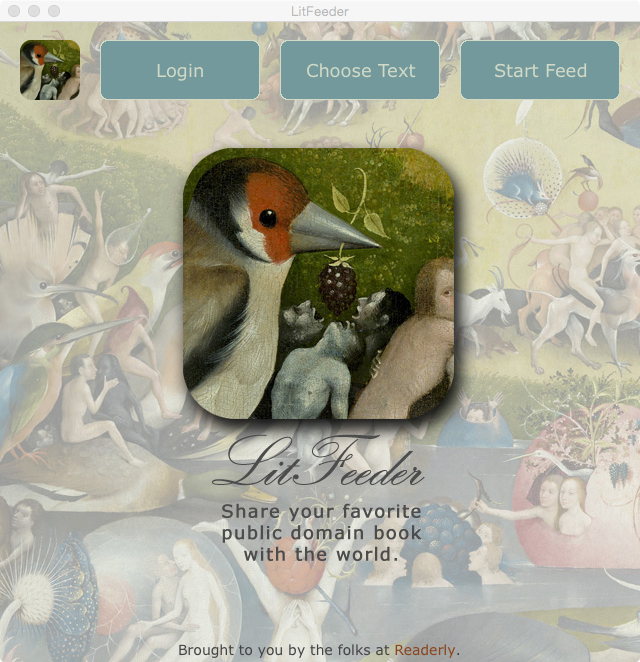Are you a developer?
Are you an artist?
Have you ever considered that apps could be art?
I started my own app-as-art journey about a year and a half ago when I had an idea to build an app that would help students develop their critical reading skills. The biggest challenge in building this app (Readerly) has been in coming to terms with how monumental a task building—and marketing—an app can be.
With the idea for Readerly buzzing around in my head, I explored my development options and quickly discovered LiveCode was the ideal tool with which to build my app. Learning to code with LiveCode has helped me to appreciate that it’s possible to be more than just a consumer of other people’s apps. Now that I’m more familiar with the fundamentals of LiveCode as a development platform, my eyes are opened to a host of other possibilities for apps.
For example, while I was learning to build an app, I was writing a column for PopMatters.com on the intersections of science, literature, and culture. PopMatters is a leading indie source of reviews and commentary on pop culture. They have a thriving blog called Moving Pixels that covers all things digital. In writing a post for Moving Pixels, I did some research on what was out there that you might consider “apps-as-art.” I discovered there’s actually not much at all. Plenty of apps claim to be artistic, but precious few offer themselves up as art for its own sake.
I began pioneering the apps-as-art field. In doing this, the biggest obstacle I’ve encountered is how new the app-as-art movement is. As few app artworks as there are out there, there’s literally no readily available discussion online regarding apps as an art form. Scholars in New Media will discuss video games. There’s also thriving online game criticism. However, no one that I’m aware of has tried to establish a framework for app-as-art criticism. There are fundamental questions that have only just begun to be explored.
I realized in order to be taken seriously as an artist and critic, I needed to do app art myself. I came up with an idea to build an app that lets you automatically tweet your favorite public domain book out into the world one sentence at a time: every half hour. I call it LitFeeder. I started by building a beta version for Mac and Windows. I’m now working on a mobile version that uses LiveCode server. I’m also simultaneously using LitFeeder to tweet M.G. Lewis’s classic Gothic novel, The Monk, out into the world.
What was meant to be a wry comment on the vapidity of conversation on Twitter has morphed into something more meaningful. Teachers can use LitFeeder to get students interested in the classics. Friends can organize book clubs using LitFeeder. Twitter lets them comment on the sentences they read together at a leisurely pace. LitFeeder makes it easy to read great books in digestible bits over the course of a few months or a year.
With the success of LitFeeder under my belt, I’m working on another app called, Have I Got A Story for You. This app will help you generate your own imaginative stories by means of an interview with an automated story guide. It’s inspired by an exercise the great playwright, Keith Johnstone, uses in his improv classes.
I’m also pleased to announce that next winter I’ll be teaching an app-as-art course (using LiveCode) at Portland Community College. I hope to start an app-as-art scene here in Portland, Oregon.
If you’re a new app builder, my advice to you would be: just jump in! When it comes to creating your own apps, the return on investment, in terms of personal satisfaction alone, is well worth the effort. You may even figure out how to win over an audience or make a good living doing it. At the very least, you’ll feel empowered.
Readerly will be available for download on the iPhone, iPad, and Android in September.
Have you created art in building your app? What was that journey like for you? Share in the comments below!




Join the conversation